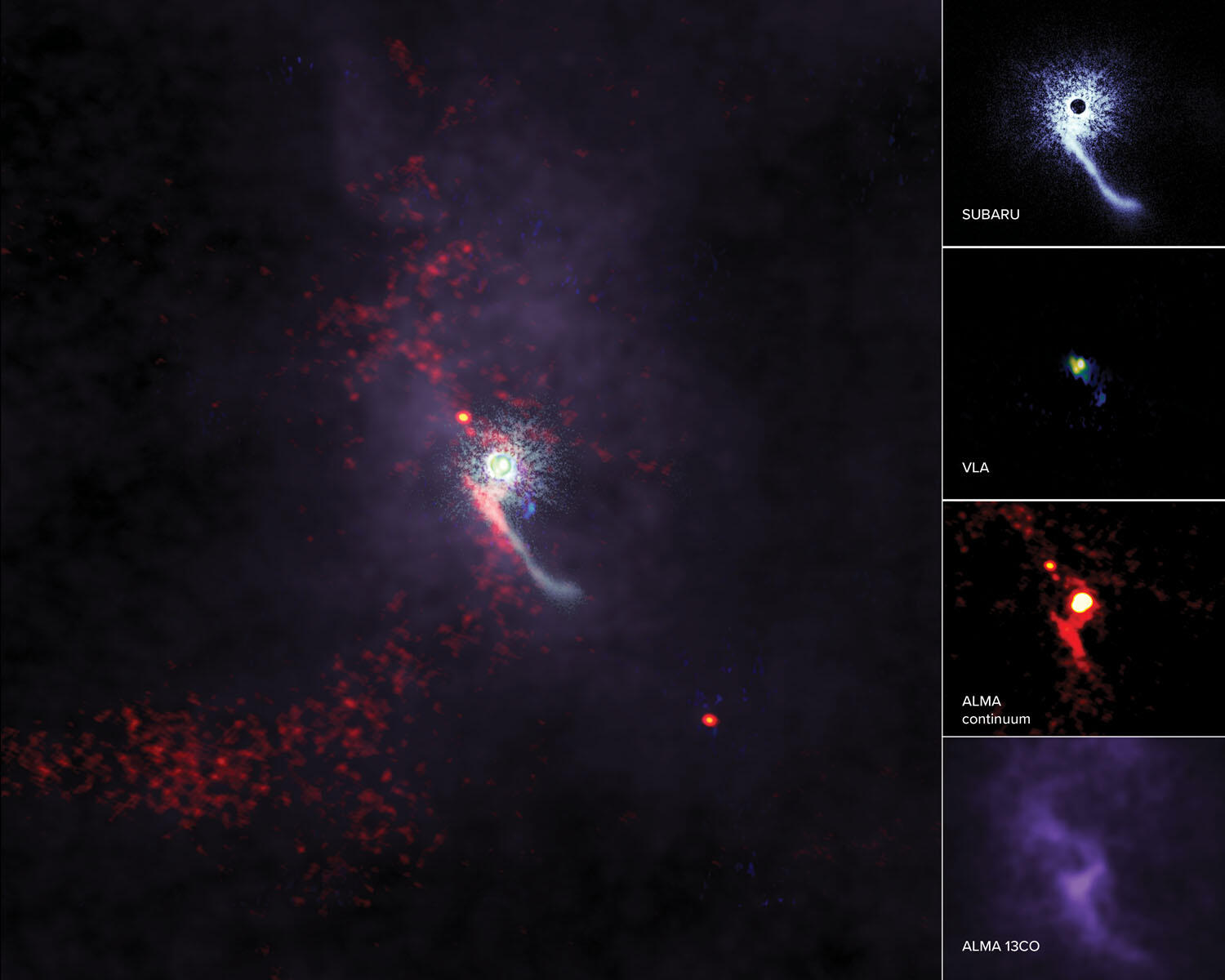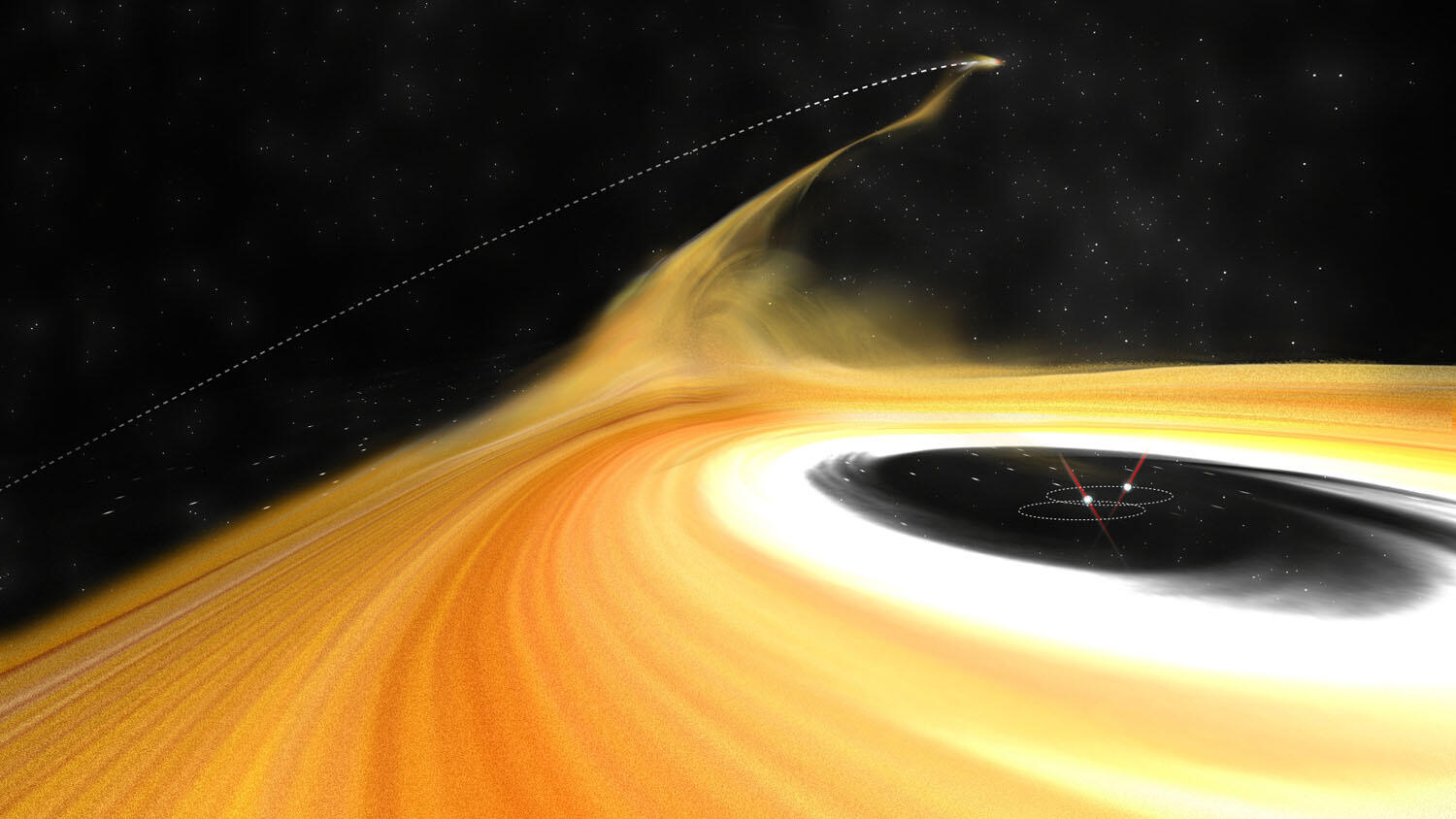Scientists have completed the first comprehensive multi-wavelength observational study of an intruder object disturbing a protoplanetary disk—the birthplace of planets—surrounding the star Z Canis Majoris (Z CMa). Images taken by the Subaru Telescope and other telescopes revealed in detail the perturbations in Z CMa's protoplanetary disk caused by the intruder object, including long streams of material.

Figure 1: Composite image from the Subaru Telescope, Jansky Very Large Array, and the Atacama Large Millimeter/submillimeter Array (ALMA). The intruder object (lower right in the composite image) was detected by ALMA at the end of the streamer clearly seen in the image taken by the Subaru Telescope. Z CMa is a pre-main-sequence binary system located about 3700 light years away in the direction of the constellation Canis Major. Both binary components undergo accretion outbursts, which may be facilitated by perturbations to the host disk by flybys. A High resolution image is here (3MB). (Credit: ALMA (ESO/NAOJ/NRAO), S. Dagnello (NRAO/AUI/NSF), NAOJ)

Figure 2: Artist's impression of the perturber leaving Z CMa, pulling a long stream from the protoplanetary disk along with it. Its "visit" may have other, as of yet unknown, impacts on the growth and development of planets in the star system. (Credit: ALMA (ESO/NAOJ/NRAO), B. Saxton (NRAO/AUI/NSF))
Perturbations, or disturbances in a protoplanetary disk, can be seen in the form of extended gas and dust streams. In the case of Z CMa, it was the morphology, or structure, of these streams that helped scientists to identify and pinpoint the intruder. By looking carefully at Z CMa's disk, scientists found several flyby fingerprints.
These fingerprints not only helped scientists to identify the intruder, but also led them to consider what these interactions might mean for the future of Z CMa and the baby planets being born in the system, a process that so far has remained a mystery to scientists. Perturbers may also impact the thermal history of the involved host stars. This can lead to such violent events as accretion outbursts, as observed in Z CMa, and also impact the development of the overall star system in ways that we haven't yet observed or defined.
Ruobing Dong, an astronomer at the University of Victoria in Canada and the principal investigator of this study, said that studying the evolution and growth of young star systems throughout the galaxy helps scientists to better understand our own Solar System's origin. "Studying these types of events gives a window into the past, including what might have happened in the early development of our own Solar System, critical evidence of which is long gone. Watching these events take place in a newly forming star system provides us with the information needed to say, 'Ah ha! This is what may have happened to our own Solar System long ago.' "
More details are available in a press release by the National Radio Astronomy Observatory.
These results were published in Nature Astronomy on January 13, 2022 as Ruobing Dong et al. "A likely flyby of binary protostar Z CMa caught in action."
The Subaru Telescope is a large optical-infrared telescope operated by the National Astronomical Observatory of Japan, National Institutes of Natural Sciences with the support of the MEXT Project to Promote Large Scientific Frontiers. We are honored and grateful for the opportunity of observing the Universe from Maunakea, which has cultural, historical, and natural significance in Hawai`i.


